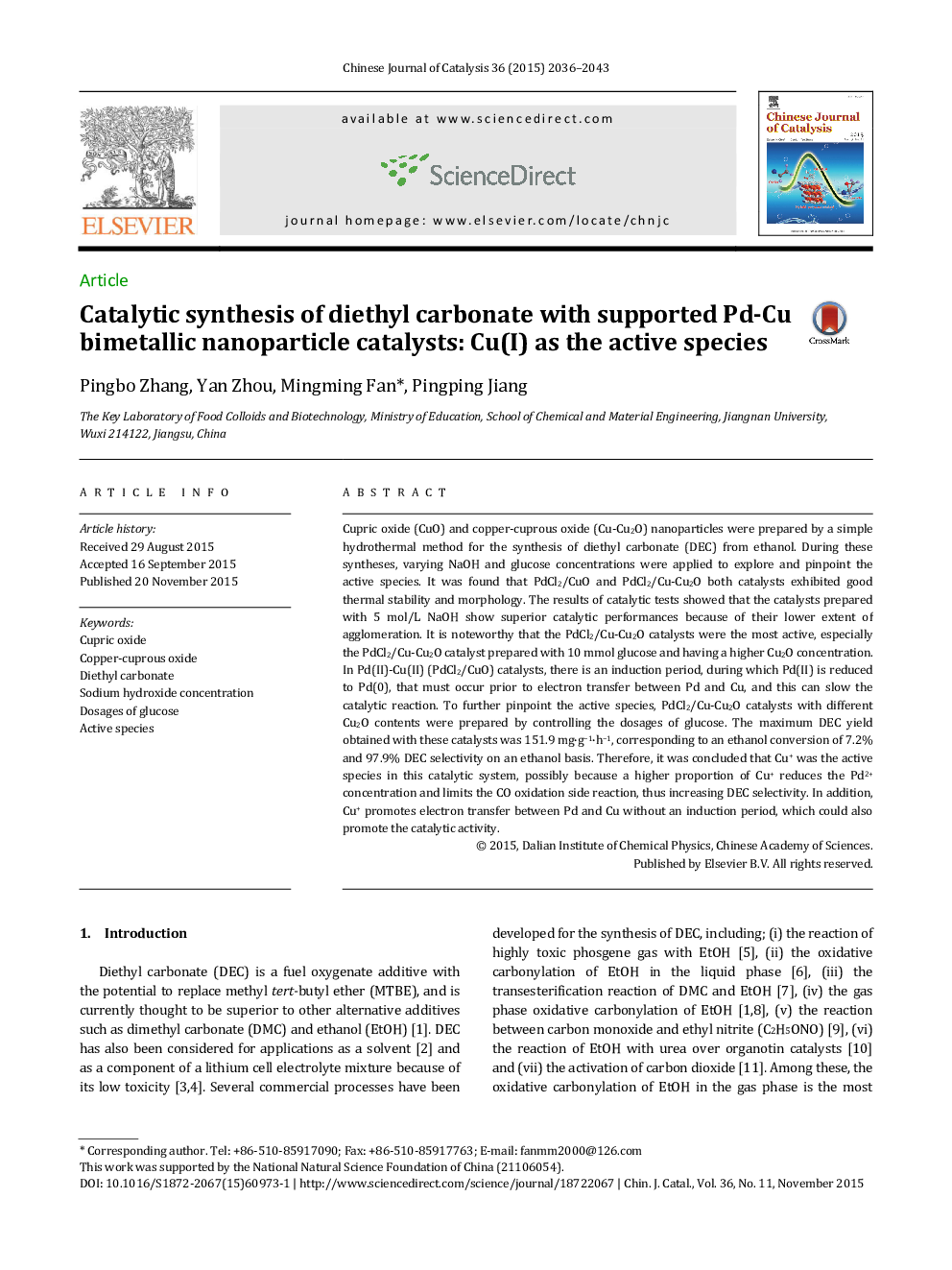| کد مقاله | کد نشریه | سال انتشار | مقاله انگلیسی | نسخه تمام متن |
|---|---|---|---|---|
| 59824 | 1419425 | 2015 | 8 صفحه PDF | دانلود رایگان |

Cupric oxide (CuO) and copper-cuprous oxide (Cu-Cu2O) nanoparticles were prepared by a simple hydrothermal method for the synthesis of diethyl carbonate (DEC) from ethanol. During these syntheses, varying NaOH and glucose concentrations were applied to explore and pinpoint the active species. It was found that PdCl2/CuO and PdCl2/Cu-Cu2O both catalysts exhibited good thermal stability and morphology. The results of catalytic tests showed that the catalysts prepared with 5 mol/L NaOH show superior catalytic performances because of their lower extent of agglomeration. It is noteworthy that the PdCl2/Cu-Cu2O catalysts were the most active, especially the PdCl2/Cu-Cu2O catalyst prepared with 10 mmol glucose and having a higher Cu2O concentration. In Pd(II)-Cu(II) (PdCl2/CuO) catalysts, there is an induction period, during which Pd(II) is reduced to Pd(0), that must occur prior to electron transfer between Pd and Cu, and this can slow the catalytic reaction. To further pinpoint the active species, PdCl2/Cu-Cu2O catalysts with different Cu2O contents were prepared by controlling the dosages of glucose. The maximum DEC yield obtained with these catalysts was 151.9 mg·g−1·h−1, corresponding to an ethanol conversion of 7.2% and 97.9% DEC selectivity on an ethanol basis. Therefore, it was concluded that Cu+ was the active species in this catalytic system, possibly because a higher proportion of Cu+ reduces the Pd2+ concentration and limits the CO oxidation side reaction, thus increasing DEC selectivity. In addition, Cu+ promotes electron transfer between Pd and Cu without an induction period, which could also promote the catalytic activity.
Graphical AbstractThe catalytic performances of PdCl2/Cu-Cu2O materials were found to be superior to those of CuO catalysts. The primary reason is believed to be that Cu+ promotes electron transfer between Pd and Cu without the requirement for an induction period, which could potentially enhance the catalytic reaction.Figure optionsDownload as PowerPoint slide
Journal: Chinese Journal of Catalysis - Volume 36, Issue 11, November 2015, Pages 2036–2043